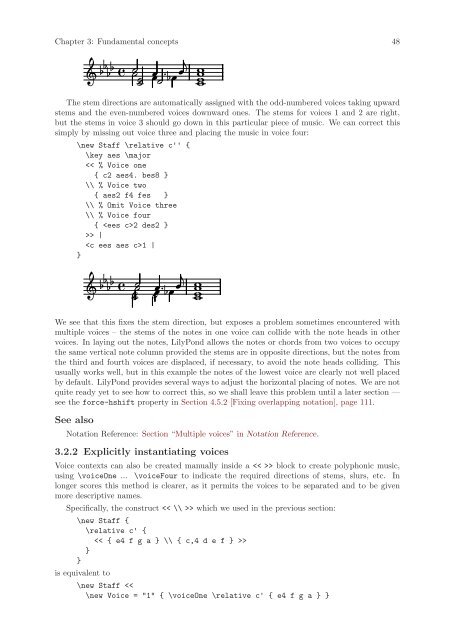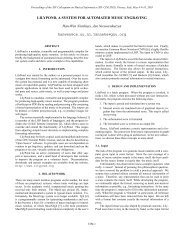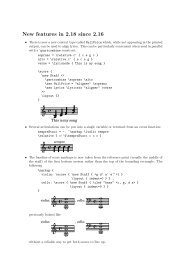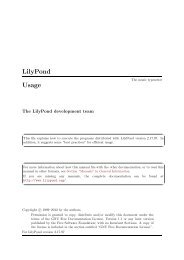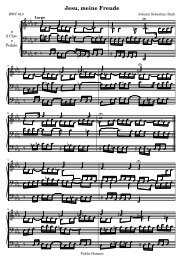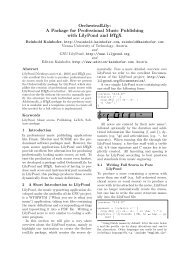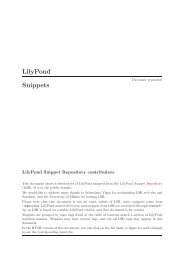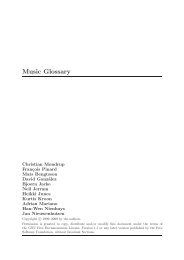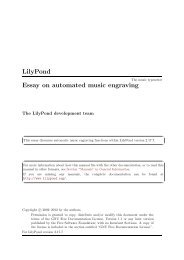Create successful ePaper yourself
Turn your PDF publications into a flip-book with our unique Google optimized e-Paper software.
Chapter 3: Fundamental concepts 48<br />
� � �<br />
�<br />
�<br />
� � ��� ��<br />
�<br />
� � �<br />
�<br />
� �� �<br />
�<br />
The stem directions are automatically assigned with the odd-numbered voices taking upward<br />
stems and the even-numbered voices downward ones. The stems for voices 1 and 2 are right,<br />
but the stems in voice 3 should go down in this particular piece of music. We can correct this<br />
simply by missing out voice three and placing the music in voice four:<br />
\new Staff \relative c'' {<br />
\key aes \major<br />
> |<br />
1 |<br />
}<br />
�<br />
� � � � ��<br />
� �� �� ��<br />
� � �<br />
�� ��<br />
�<br />
We see that this fixes the stem direction, but exposes a problem sometimes encountered with<br />
multiple voices – the stems of the notes in one voice can collide with the note heads in other<br />
voices. In laying out the notes, <strong>LilyPond</strong> allows the notes or chords from two voices to occupy<br />
the same vertical note column provided the stems are in opposite directions, but the notes from<br />
the third and fourth voices are displaced, if necessary, to avoid the note heads colliding. This<br />
usually works well, but in this example the notes of the lowest voice are clearly not well placed<br />
by default. <strong>LilyPond</strong> provides several ways to adjust the horizontal placing of notes. We are not<br />
quite ready yet to see how to correct this, so we shall leave this problem until a later section —<br />
see the force-hshift property in Section 4.5.2 [Fixing overlapping notation], page 111.<br />
See also<br />
Notation Reference: Section “Multiple voices” in Notation Reference.<br />
3.2.2 Explicitly instantiating voices<br />
Voice contexts can also be created manually inside a > block to create polyphonic music,<br />
using \voiceOne ... \voiceFour to indicate the required directions of stems, slurs, etc. In<br />
longer scores this method is clearer, as it permits the voices to be separated and to be given<br />
more descriptive names.<br />
Specifically, the construct > which we used in the previous section:<br />
\new Staff {<br />
\relative c' {<br />
><br />
}<br />
}<br />
is equivalent to<br />
\new Staff


